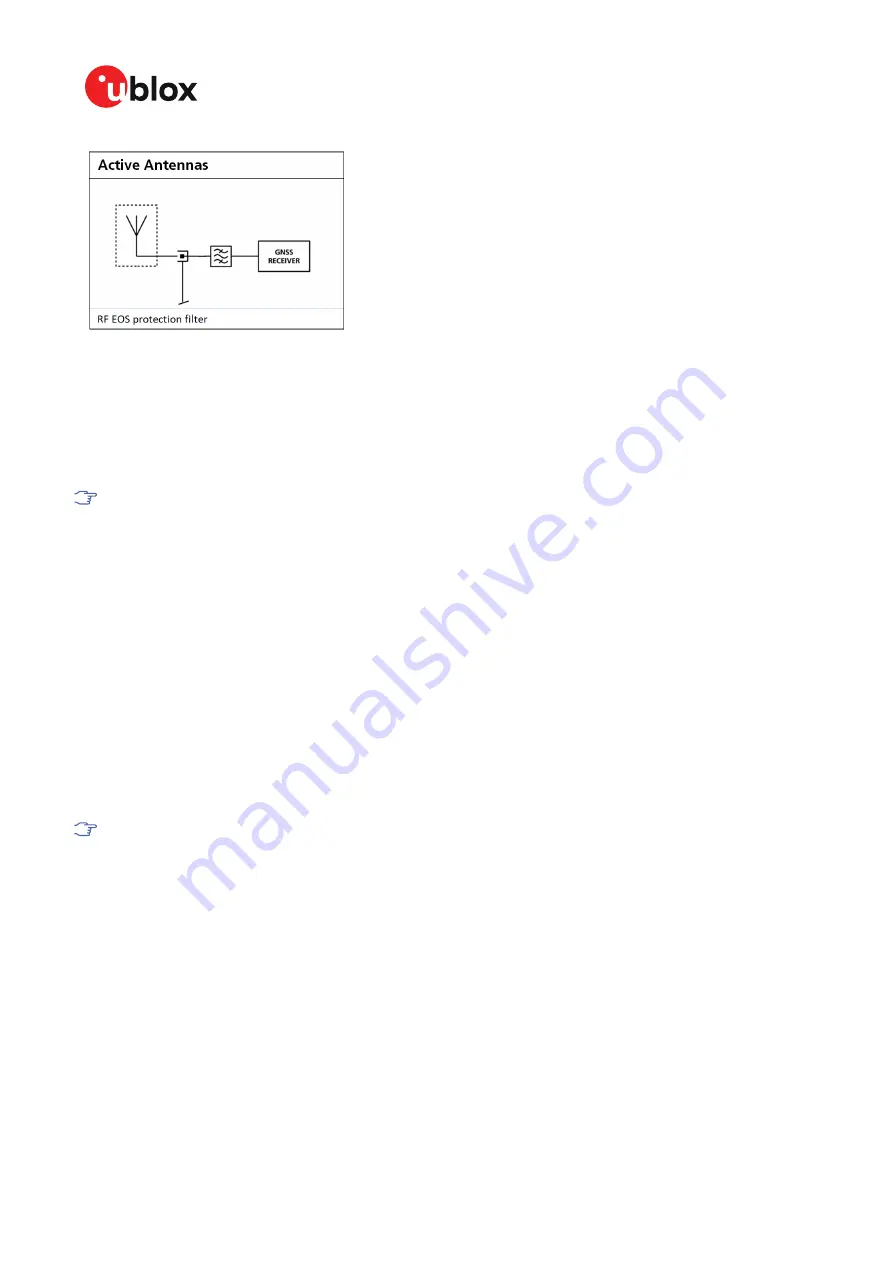
NEO-D9S - Integration manual
Figure 22: Active antenna EOS protection
4.5.3 Safety precautions
The NEO-D9S must be supplied by an external limited power source in compliance with the clause
2.5 of the standard IEC 60950-1. In addition to external limited power source, only Separated or
Safety Extra-Low Voltage (SELV) circuits are to be connected to the module including interfaces and
antennas.
For more information about SELV circuits see section 2.2 in Safety standard IEC 60950-1.
4.6 Electromagnetic interference on I/O lines
Any I/O signal line with a length greater than approximately 3 mm can act as an antenna and may
pick up arbitrary RF signals transferring them as noise into the receiver. This specifically applies to
unshielded lines, in which the corresponding GND layer is remote or missing entirely, and lines close
to the edges of the printed circuit board.
If, for example, a cellular signal radiates into an unshielded high-impedance line, it is possible to
generate noise in the order of volts and not only distort receiver operation but also damage it
permanently. Another type of interference can be caused by noise generated at the PIO pins that
emits from unshielded I/O lines. Receiver performance may be degraded when this noise is coupled
into the L-band antenna.
EMI protection measures are particularly useful when RF emitting devices are placed next to the
L-band receiver and/or to minimize the risk of EMI degradation due to self-jamming. An adequate
layout with a robust grounding concept is essential in order to protect against EMI.
Intended Use: In order to mitigate any performance degradation of a radio equipment under
EMC disturbance, system integration shall adopt appropriate EMC design practice and not
contain cables over three meters on signal and supply ports.
4.6.1 General notes on interference issues
Received L-band signal power at the antenna is very low. At the nominal received signal strength
(-128 dBm) it is below the thermal noise floor of -111 dBm. Due to this fact, a L-band receiver is
susceptible to interference from nearby RF sources of any kind. Two cases can be distinguished:
• Out-of-band interference: Typically any kind of wireless communications system (e.g. LTE,
GSM, CDMA, 3G, WLAN, Bluetooth, etc.) may emit its specified maximum transmit power in
close proximity to the L-band receiving antenna, especially if such a system is integrated with
the L-band receiver. Even at reasonable antenna selectivity, destructive power levels may reach
the RF input of the L-band receiver. Also, larger signal interferers may generate intermodulation
products inside the L-band receiver front-end that fall into the L-band band and contribute to
in-band interference.
UBX-19026111 - R07
4 Design
Page 32 of 52
C1-Public
















































